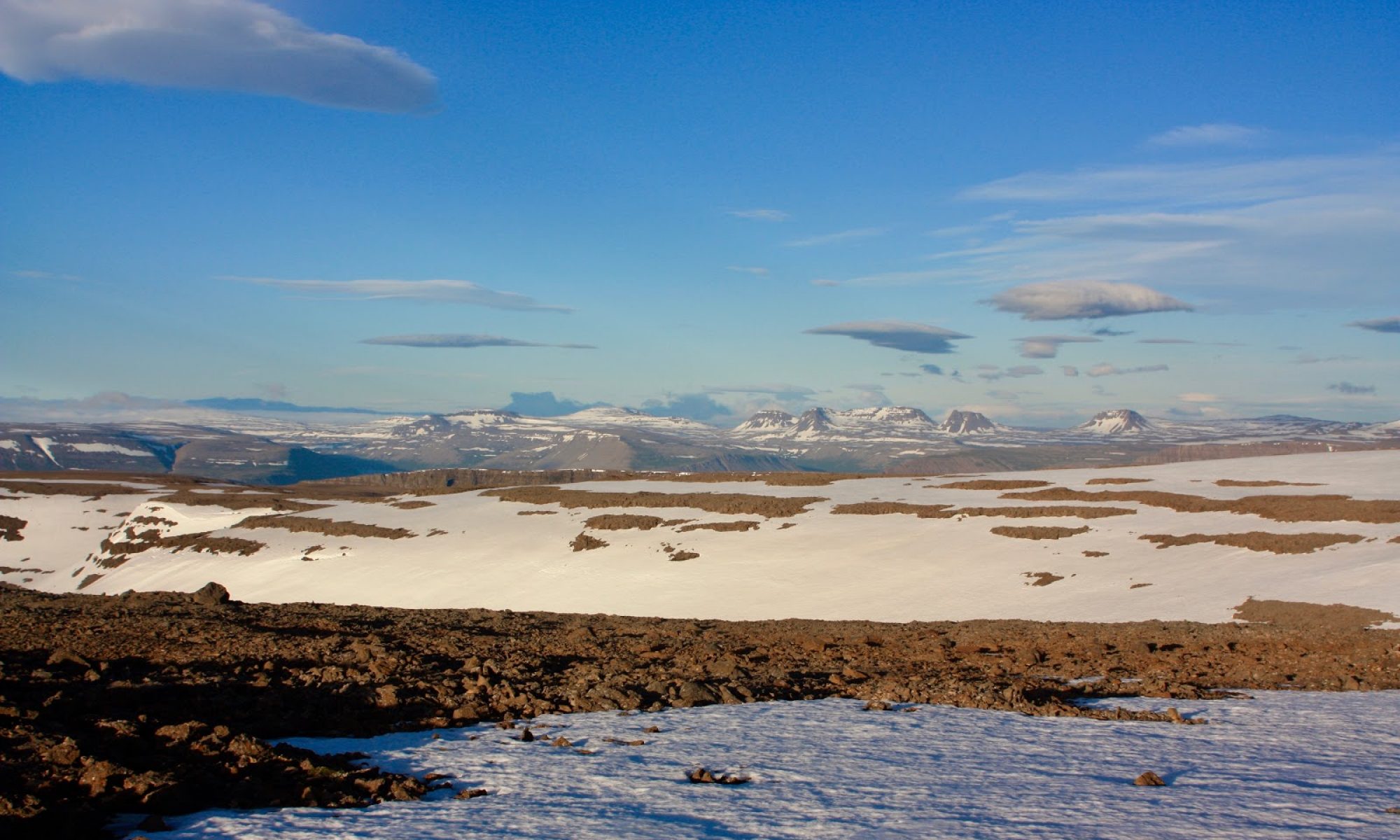Columnar Basalt

Columnar basalt is formed when a lava flow cools slowly. As it cools, the lava contracts. Cracks develop, just as they do in the mud of a drying lakebed when the perimeter of the lake does not shrink, but the mud within the perimeter does. The cracks do not occur in random fashion; as it turns out, nature prefers an angle of 120 degrees. And this creates hexagons.

The thicker the flow, the longer it takes for lava to cool. The longer it takes to cool, the larger in diameter the columns will be. If the cooling of the lava was uniform throughout the flow, the hexagons would be perfect, but seldom is cooling uniform. With uneven cooling, the hexagons are distorted and irregular. Of course, some columns just feel a need to be different, and so pentagons occur from time to time. Nature is a dance of pattern and variation.

One delightful example of columnar basalt is at Svartifoss, the Black Waterfall, in southern Iceland. This is a magical little enclave. A distinctive feature is that the columns fracture and drop from the bottom up, forming an overhang with hundreds of small roofs. As the blocks break off and drop to the slope below, they assemble in a talus slope of hexagonal boulders.

Hexagons are common in nature. Snowflakes, the cells of a honeycomb, pomegranate seeds, the many facets of an insect’s eye, and even carbon molecules are all hexagonal. Next time you are in a bathtub, take a good look at bubbles; while a single bubble is circular, the interior bubbles in a raft will morph to hexagons. This is a manifestation of the “dense packing principle,” which involves the most efficient way to fill a space with the least amount of material.

Basalt columns occur in volcanic landscapes all over the world. Three of the most famous formations are the Devil’s Postpile, in California; Devil’s Tower, in Wyoming; and the Devil’s Causeway, in Northern Ireland. I don’t know why the devil has such a fondness for columnar basalt. I find nothing sinister in these magnificent columns. Iceland, Washington, and Arizona are all blessed with very scenic displays of columnar basalt.

Much of Washington is covered in basalt, due to a huge prehistoric effusion of lava known as the Columbia Basin flood basalts. A connoisseur of columnar basalt has much to choose from. Frenchmen Coulee is well-known for its tall basalt columns, many of them curiously rippled like crinkle-cut French Fries. The Tieton River valley offers miles of beautiful columns, tinged orange by lichen, rising above the beautiful swift-flowing Tieton River. But my favorite columnar basalt in Washington may be a crag at a place called the Drumheller Channels, just south of Moses Lake, in the desert interior.

At Drumheller Channels, a long row of columns rises out of the grasslands. The top of the crag is a mosaic of basalt pillows separated by deep cracks. Don’t drop your car keys! It is a hike across a few miles of tick-infested grasslands to reach these cliffs, so it is very quiet and peaceful. From the top, the view over the channeled scablands feels oceanic. Approximately 15,000 years ago, unimaginably huge floods from glacial lake Missoula scoured this country, carving deep coulees and countless potholes.

Columnar basalt occurs in Arizona as well, thanks to past eruptions of the San Francisco Peaks, near Flagstaff. One unique characteristic of these flows is their dramatic juxtaposition with rust and cream-colored sandstones in the canyons that incise the Mogollon Rim. One location that is popular with rock climbers is an alcove of basalt in Oak Creek Canyon, near the Enciniso Picnic Area, where a seasonal waterfall makes intermittent appearances during the spring thaw or after a summer thunderstorm. When flowing, this waterfall is strikingly similar to Svartifoss.

Along the rim of Pumphouse Wash, a layer of basalt covers Coconino sandstone, like black frosting on a beige cake. As this basalt is weathered and fractured, boulders trundle into the canyon bottom, sometimes getting trapped in potholes in the slot canyons that are sculpted into the soft sandstone. Here, in the tumbler of yearly flash-floods, the angular basalt eventually loses its hard edges and is polished into smooth grey globes.

Basalt is by far the most common of all igneous rocks, but its ubiquity does not diminish its beauty. Based on the circumstances of its creation, it is diverse in texture, color, and form. Sometimes it solidifies into columns; other times it is amorphous, ropy, or frothy. Sometimes it is dense; other times it is full of holes from trapped air bubbles. It is often stratified, like sedimentary rock, with each layer displaying distinct characteristics due to a different rate of cooling or different proportions of mineral ingredients.

It would take many lifetimes to investigate the smorgasbord of basalt in Iceland. One good place to sample the variety of structure and texture is along the rugged coastline, where basalt cliffs meet the relentless pounding of the North Atlantic. It is possible to see how different layers of basalt take on different characteristics. The water exploits weaknesses in the rock, sculpting towers, caves, and arches.

In Iceland, rock-climbing is less popular than in Arizona, and lovely crags such as Gerduberg show little evidence of climbers. In my two visits to Gerduberg, both on perfect summer days, no climbers were present. A crag of this quality, right next to a highway, would be crawling with climbers in the United States. It was nice to have the place all to myself. I brought my rock shoes and did some soloing on easy routes. Basalt columns just beg to be climbed!
